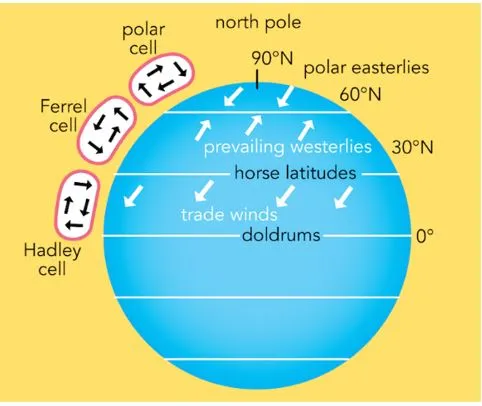

19th February 2025 (14 Topics)
Context
February, typically considered a winter month in Mumbai, has witnessed unusually high temperatures this year. This heat wave is significant as it breaks the normal temperature patterns for this time of year.
Factors behind the Heat:
- Wind Patterns: Easterly winds are blowing in the morning hours, bringing some coolness, but by noon, the winds change direction to north-westerly.
- These north-westerly winds cause a significant rise in daytime temperatures. This shift is a major factor behind the recent temperature spike.
- Absence of Western Disturbances: Normally, western disturbances—weather systems that bring rain and cooler northerly winds—help bring down temperatures in February. However, this year, western disturbances have been absent, preventing any cooling effect.
- Anticyclonic System in the Arabian Sea: The warm winds are due to an anticyclonic system over the Arabian Sea.
- This system causes winds to move in a clockwise direction, resulting in north-westerly winds reaching Mumbai.
- Clear Skies and Bright Sunlight: Clear skies and bright sunlight throughout the day have contributed to higher daytime temperatures.
- The absence of cloud cover causes faster cooling at night, which leads to a greater difference between day and night temperatures.
Does This Mark the End of Winter?
- Transition Month: February is considered a transition month between winter and summer in Mumbai. Therefore, fluctuations in temperature, like the current heat wave, are typical for this time of year.
- Official Start of Summer: Summer in Mumbai typically begins in March, but the IMD does not officially declare the end of winter or the onset of summer with a specific date.
- Future Forecast: The IMD predicts that the high temperatures will persist for the next 4-5 days, with the maximum temperature possibly reaching 37°C on February 22.
- However, the heat may slightly reduce after Thursday when the anticyclonic system is expected to weaken, bringing a dip in temperatures.
Earth's Major Wind ZonesThe Earth’s wind systems are influenced by the planet's rotation, the sun's heating, and the distribution of landmasses and oceans. These factors create distinct wind zones that help shape global weather patterns. The five major wind zones are: Polar Easterlies, Westerlies, Horse Latitudes, Trade Winds, and Doldrums. Polar Easterlies:
Westerlies:
Horse Latitudes:
Trade Winds:
Doldrums:
Western Disturbances (WDs)
|
More Articles


